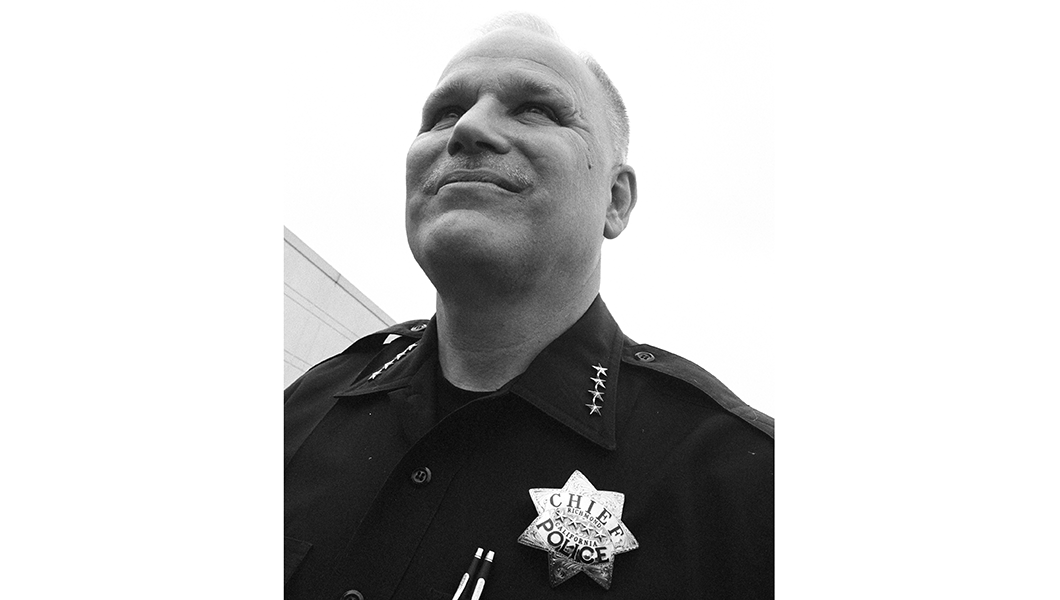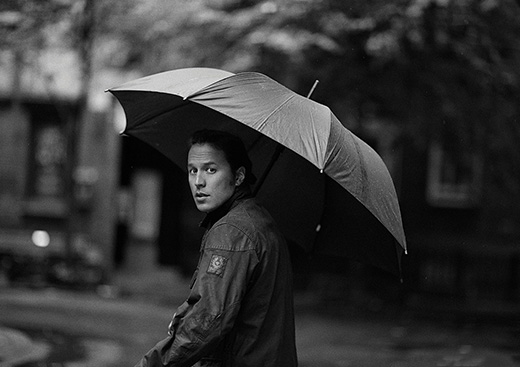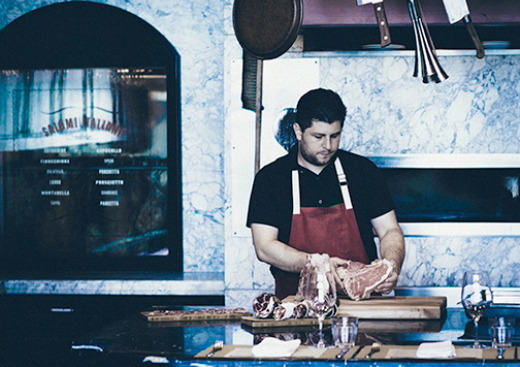Chris Magnus never intended to be a police officer, never mind one of the country’s most influential police chiefs today. But what started out as a commitment to community service in his youth sent Magnus down the career path to eventually become one of the leaders in the community-policing movement in America, with the results to prove it. After taking on the role of police chief in Richmond, California, in 2006, Magnus and his force saw a drastic reduction in violent crime to less than 1,000 incidents in 2014, and a drop in homicide levels from 47 in 2007 to just 11 last year. In early 2015, he was invited to testify before a newly created Presidential Task Force on 21st Century Policing to help shape future policing policies and community relationship-building nationwide. And in January 2016 he stepped into his newest role, as police chief of Tucson, Arizona.
“I’m not from a police family,” says Magnus, looking back on his childhood as the youngest of four in Lansing, Michigan. “My parents were professors and teachers. It wasn’t something that was handed down generationally.” But from an early age, Magnus was engaged in community-organizing work, devoting his time to the likes of United Farm Workers and juvenile justice issues. “Frankly, I did not really see the police as advocates or necessarily partners in any of those endeavors,” says Magnus, who admits being influenced by Cesar Chavez’s ideology in his youth. “He’s one of the reasons I got involved with United Farm Workers, because of what he was able to accomplish, despite incredible roadblocks and barriers in terms of fighting for farm-worker rights and protecting the dignity of folks who are still in many ways underappreciated and undervalued for what they do.”
By age 15, Magnus and his friends had set up a statewide advocacy organization called the Three O’Clock Lobby, run by youth and focused on juvenile justice issues. Later, as a student at Michigan State University, Magnus took on an internship that involved spending considerable time with the Lansing and Detroit police departments. “It gave me a very different perspective on some of the challenges and issues they face,” he says. “I also got a sense of how much influence good police officers could have on young people they dealt with and on really being good advocates for the community and, more specifically, in the neighborhoods they worked in.”
Magnus needed to find a way to pay for his college tuition and landed a job as a dispatcher with the Lansing Police Department—an experience that allowed him to sharpen his skills in dealing with a community. The job also piqued his interest in Emergency Medical Services and the work of paramedic deputies, who worked as police officers but also answered medical calls. Drawn to the patient-care aspect of the job, Magnus studied to become an EMT and a paramedic before enrolling in the police academy. Upon graduation he accepted positions as a sheriff’s deputy in Livingston County and a part-time paramedic.
But it was his next job, as a police officer in Lansing, serving the MSU community, among others, where Magnus became part of a force that was pioneering the community-policing movement—“the idea of officers becoming engaged in neighborhoods and taking a broader role in terms of solving problems and being better partners with members of the community to address a broader selection of challenges and issues,” he explains.
Magnus worked his way up the ranks to captain before accepting the job as chief of police in Fargo, North Dakota, where he put his community-policing skills to the test—and passed with flying colors. “On its face, Fargo is quite a homogenous community,” says Magnus. In reality, it was a city dealing with a lot of refugee resettlement from the likes of Eastern Europe and East Africa, topped with everyday issues from meth use to domestic violence. “We really wanted to create an environment that was supportive and inclusive of the changing population,” says Magnus, who credits his time in Fargo with building his experience and working relationships.
“There’s not one simple thing like, ‘Add this set of ingredients, stir and voilà, you’ve got a successful policing program,’ ” says Magnus. “You have to hire people who are really invested in this kind of work, who want to be a police officer and who want to serve their community for the right reasons, and see their job more broadly than just doing enforcement.” Magnus also places an emphasis on the right training to help build well-rounded police officers, paired with setting proper expectations and providing the right supervision. “You can say you value community policing all day long, but when your promotions are based on how well you do on a test and saying the right things in an interview, having good stats or whatever for enforcement and the like, you give a mixed message.”
And when the Richmond Police Department came knocking on Magnus’ door in 2006, he answered its call, taking on the role of chief of police in the Northern California town of just over 100,000, with one of the worst homicide rates in the country at the time. Under Magnus’ decade-long watch, Richmond’s crime rate was the lowest it’s been in 30 years. Magnus’ community-policing philosophy not only won the hearts and minds of the city, its businesses and local leaders but garnered national attention for its effectiveness in reducing crime, building trust and creating effective partnerships. As Magnus sees it, police need to be assigned to districts in a way where they can really get to know people and get involved on a broader spectrum, or as he puts it, “not just being a slave to the 911 call machine.” As police across America are coming under fire for brutality and the excessive use of force, Magnus and his Richmond department emerged as a shining example of how a community and its police can work together to drive down crime and make a difference. (It’s hardly a surprise that Magnus was actively recruited for the role of chief of the Tucson Police Department.)
It’s not just Magnus’ singular approach to policing that has attracted national attention, but his personal life has been a talking point, too. In 2014 he became the first openly gay male police chief to get married. Magnus doesn’t seek to draw attention to his personal life, nor has he ever felt it’s something he needed to hide or step away from. “It’s important that people see we can all come from really different life experiences and backgrounds and yet find common ways to work together on issues that affect our day-to-day lives,” he says. “I think most people share a common desire that they want to be safe, that they feel like the quality of life where they live is high and there’s going to be a place for their kids.”
Nowhere has Magnus’ commitment to building trust between his police force and his community been more apparent than on social media in late 2014, when the chief was photographed in Richmond holding a sign reading “#BlackLivesMatter,” as part of a peaceful protest against the deaths of Eric Garner and Michael Brown at the hands of police officers. Though Magnus caught flack for holding the sign while in uniform—which he told the media was simply intended as a “humane” statement—it evoked a powerful nationwide reaction for showing a police officer standing up for his community.
“We see evidence all the time that there are some police officers who are doing some questionable—if not downright unacceptable—kinds of things,” says Magnus. “But there are 18,000 police departments around the country, and within those departments there are hundreds and thousands of police officers, the great majority of whom are trying to do the right thing, who got into policing because they want to help people.”
—




